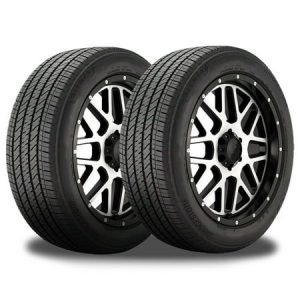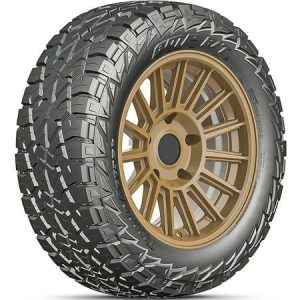Ever stared down a flat tire and wondered how long you’d be stranded? Replacing all four tires can feel daunting, but with the right information, you can navigate the process smoothly. This guide explores how long it takes to replace 4 tires, considering factors that influence the timeframe and offering tips to optimize your experience.
Understanding the Tire Replacement Process
Replacing four tires involves several steps:

- Lug Nut Removal: Loosening the lug nuts that secure the tires to the wheel hubs.
- Tire Removal: Using a tire iron to pry the old tire off the rim.
- New Tire Installation: Mounting the new tire onto the rim.
- Balancing: Ensuring even weight distribution across the tire and rim assembly for smooth driving.
- Mounting and Inflation: Attaching the balanced tire assembly back onto the vehicle and inflating it to the recommended pressure.
- Torque Check: Tightening the lug nuts to the manufacturer’s specified torque using a torque wrench.
These steps might seem straightforward, but the time it takes can vary depending on several factors.
Factors Affecting Tire Replacement Time
Who’s Doing the Replacement?
- Professional Service: Experienced mechanics at tire shops or dealerships typically replace four tires in 45 minutes to 1 hour. They have the necessary tools, expertise, and often operate efficient workflows.
- Do-It-Yourself (DIY): If you’re mechanically inclined and have the proper tools (jack, lug wrench, tire iron), replacing four tires yourself could take 2-4 hours. However, factor in potential complications and unexpected delays.
Shop or Dealership Selection:
- Busy Shops: During peak seasons or without an appointment, waiting times at tire shops can extend the process.
- Specialized Tire Shops: Shops dedicated solely to tires might prioritize efficiency, potentially leading to faster service.

Tire and Vehicle Type:
- Tire Size and Rim Diameter: Larger tires and rims generally take longer to handle due to their weight and size.
- Run-Flat Tires: These require specialized equipment and might add time to the replacement process.
Additional Services:
- Wheel Alignment: Misaligned wheels can cause uneven tire wear. Getting an alignment after replacing tires is recommended and can add 30-45 minutes.
- Valve Stem Replacement: Replacing worn valve stems during tire installation is a good practice and adds minimal time.
Tips to Minimize Tire Replacement Time
- Schedule an Appointment: Booking a service slot in advance reduces waiting times at tire shops.
- Gather Information: Knowing your tire size and preferred brand beforehand streamlines communication with service providers.
- Consider Additional Services: Discuss wheel alignment and valve stem replacement during booking to avoid separate appointments.
- Prepare for DIY: If tackling the job yourself, ensure you have the necessary tools and a designated workspace. Watch instructional videos beforehand to familiarize yourself with the process.
When replacing tires yourself, prioritize safety by using jack stands and following proper lifting procedures. If unsure about any step, seek professional assistance.
The Financial Aspect of Tire Replacement
While time is valuable, understanding the cost associated with replacing four tires is crucial. Here’s a breakdown:

- Tire Cost: Prices vary depending on brand, size, performance features, and warranty. Budget tires might start around $50 each, while high-performance options can exceed $200.
- Service Fees: Tire shops typically charge a mounting and balancing fee per tire, ranging from $20 to $40.
- Additional Services: Wheel alignment costs can vary between $60 and $100, and valve stem replacements are usually minimal additional charges.
Finding the Right Balance: Striking a balance between cost and quality is essential. Consider your driving habits, budget, and desired tire lifespan when making a selection.
Peace of Mind on the Road: Invest in Quality Tires
While replacing four tires might take some time and incur costs, it’s an investment in your safety and driving experience. Here’s why prioritizing quality tires matters:
- Enhanced Traction and Control: Worn tires compromise traction in wet and snowy conditions, increasing stopping distances and posing safety risks.
- Improved Fuel Efficiency: Properly inflated tires with good tread depth contribute to better gas mileage.
- Reduced Road Noise: New tires generate less road noise, creating a quieter and more comfortable ride.
Choosing the Right Tires for Your Needs
Selecting the appropriate tires goes beyond just size and price. Here are key factors to consider:

- Driving Conditions: All-season tires offer a good balance for various weather conditions. Consider performance tires for enhanced handling or winter tires for snowy regions.
- Speed Rating: Ensure the tire’s speed rating matches or exceeds your vehicle’s maximum speed capability.
- Load Rating: This rating indicates the weight the tire can safely support. Choose a load rating appropriate for your vehicle’s weight and typical cargo load.
- UTQG Ratings: The UTQG (Uniform Tire Quality Grading) system provides ratings for treadwear, traction, and temperature resistance. Consider your priorities when evaluating these factors.
Consulting a tire specialist or researching online resources can help you navigate these factors and select the optimal tires for your vehicle.
Tire Maintenance for Extended Life
Once you’ve invested in new tires, proper maintenance is crucial to maximize their lifespan and performance. Here are key practices:
- Regular Rotation: Rotate your tires every 5,000 to 7,000 miles to ensure even wear. Consult your vehicle’s owner’s manual for the recommended rotation pattern.
- Maintain Proper Inflation: Check your tire pressure regularly (at least once a month) and before long trips. Maintaining the recommended pressure optimizes fuel efficiency, handling, and treadwear.
- Visual Inspection: Regularly inspect your tire for signs of damage, uneven wear, or foreign objects lodged in the tread. Address any concerns promptly to prevent further issues.
By following these practices, you can get the most out of your new tire and ensure a smooth and safe driving experience.
The Environmental Impact of Tires
Tire production and disposal have environmental consequences. Here’s how to be an eco-conscious tire consumer:

- Choose Eco-Friendly Tire: Look for tire with low rolling resistance, which can improve fuel efficiency and reduce emissions. Consider manufacturers committed to sustainable practices.
- Proper Tire Disposal: Don’t simply throw away old tire. Many tire shops and recycling centers offer responsible disposal options.
Making informed choices about tire selection and disposal contributes to a greener future.
Making Informed Decisions for Your Next Tire Replacement
Replacing four tire is an essential part of vehicle maintenance. By understanding the timeframes involved, the cost factors, and the additional considerations explored in this guide, you can make informed decisions. Remember, prioritizing quality tires is an investment in your safety, driving experience, and the environment. So, take charge, schedule your appointment, and get ready to hit the road with confidence!
